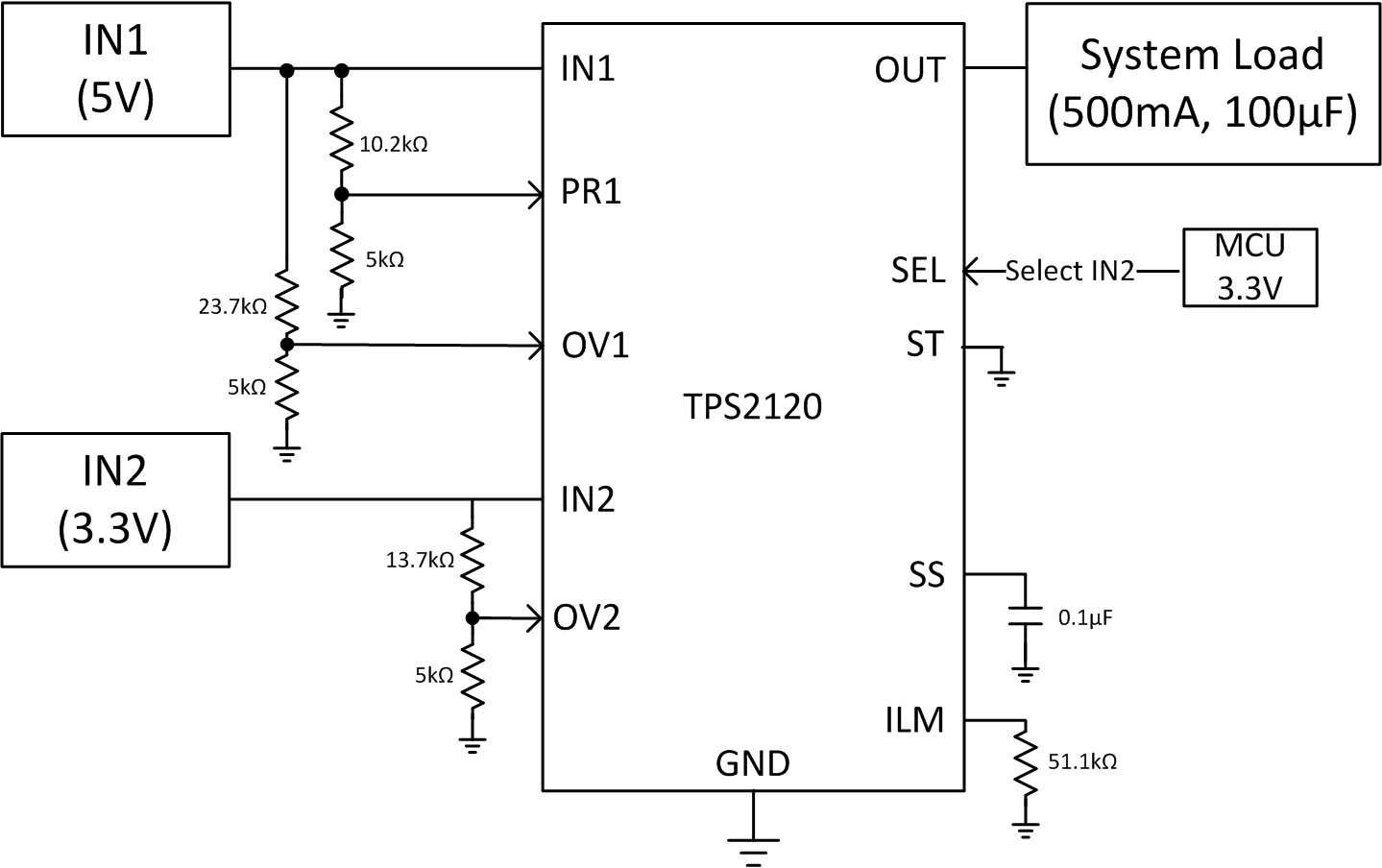SLVAE51A November 2018 – October 2020 LM7310 , TPS2100 , TPS2101 , TPS2102 , TPS2103 , TPS2104 , TPS2105 , TPS2110 , TPS2111 , TPS2111A , TPS2112 , TPS2112A , TPS2113 , TPS2113A , TPS2114 , TPS2114A , TPS2115 , TPS2115A , TPS2120 , TPS2121 , TPS25947
2.3 Both - Automatic + Manual Override
There are some Power MUX solutions which offer the flexibility to be used in a automatic configuration and be controlled by a manual control signal. The TPS212x family of Power MUX solutions can have a default (automatic) priority, but then be overriden by an external microcontroller if needed. This method is useful in applications which will have a default priority for most of its operation, but there will be some modes (such as diagnostics) requiring manual control to force which path is enabled.
 Figure 2-3 Automatic Power MUX with Manual Override using TPS2120
Figure 2-3 Automatic Power MUX with Manual Override using TPS2120